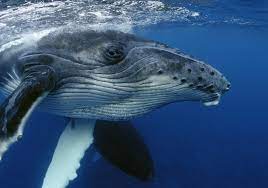Rhythm and Blues...
Far away from the void of space, the Earth looks a
ball of blue- an untouched brushstroke placed masterfully in the midst of
nothing and everything. But the glory of the sight is slowly and steadily
becoming solely external, and active steps have to be taken to ensure that the
hues don’t fade away to merge into the darkness that surround it.
Today, the world is looking at a huge crisis- that of
ever-soaring demand of water and the inability to keep the quality up with it.
Moreover, the bare minimum of safe and hygienic drinking water is decreasing
alarmingly. This demand for freshwater is rising as a result of not just
increasing population, but with the combination of urbanization, industrial
development, agriculture and rising life standards; but the unsustainable
ground water mining and pollution are not helping the cause.
World Water Monitoring Day (WWMD) is a global
education and outreach event designed to promote personal stewardship and
individual involvement in the protection of our world water resources. WWMD is
designed to expand and enhance the on-going efforts by creating a focal event
to annually draw direct attention to water quality and to educate global
citizens about the same.
World Water Monitoring Day was first initiated as a
U.S. national event by America’s Clean Water Foundation (ACWF) in 2002, as part
of the celebrations of the 30th Anniversary of the Federal Clean Water Act. The
success of this National Water Monitoring Day (NWMD) led ACWF to expand the
educational outreach effort throughout the world. Ever since, the recurring day
has been endorsed by groups whose interests fall in line with causes of
preservation worldwide as one of the landmarks that can potentially elevate
sensitivity and sense of urgency towards this very immediate real-world crisis.
The target group comprises of all sections of the
community. To get involved, participants first register at the WWMD website
(www.worldwatermonitoringday.org).
They then conduct the tests either using test kits
obtained from their school or specially prepared kits available for purchase
through the WWMD website. The water quality indicators like temperature, pH,
dissolved oxygen and turbidity are used to assess water health. After
monitoring the sites, the results are then fed into the WWMD website, which
subsequently makes available the compiled report available online for the
general public.
Outdoor educational settings have the potential to
teach young people to consider environmental impacts when developing activities
either in their life or within their community. In this context, the increasing
participation in WWMD provides an opportunity to unify citizens, schools,
governments and business as stewards of the water resources that impact
everyone in an exciting and fun way.
Overall, educating and empowering people to become
active agents of sustainable and equitable development would be an important
step towards a better global future.




Comments
Post a Comment
Let us know your reviews. Constructive criticism always welcomed!